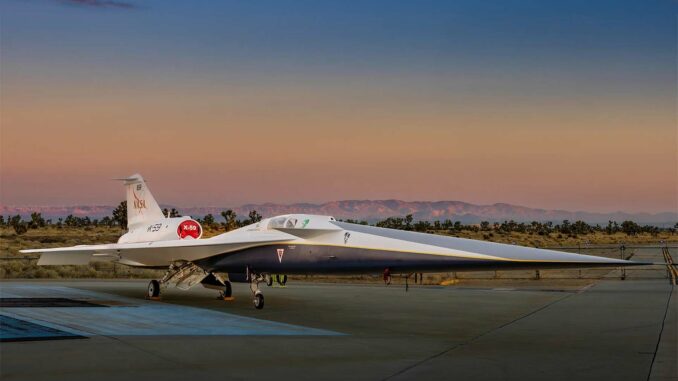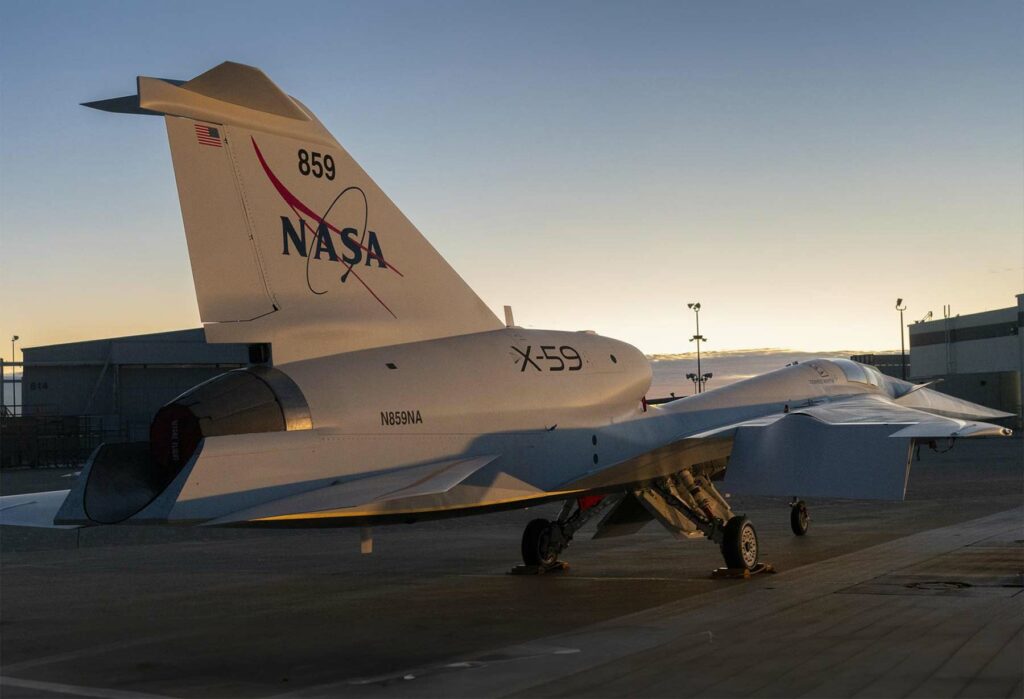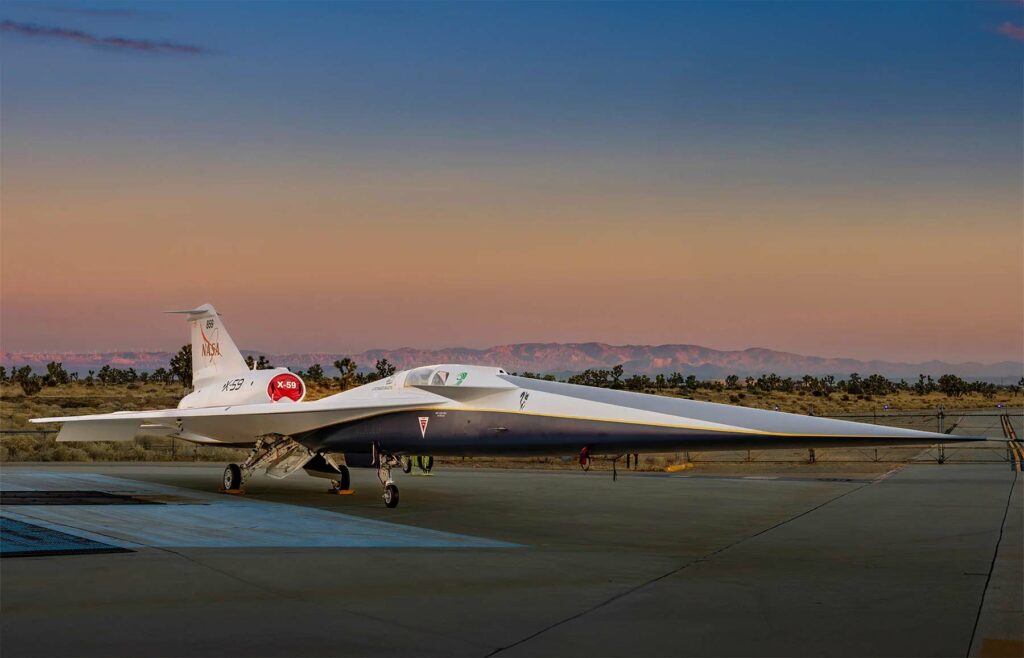
NASA unveils the X-59 Quesst, a ‘silent’ supersonic jet designed to break the sound barrier without producing a deafening sonic boom.
The X-59 Quesst: a major breakthrough in supersonic aviation
NASA’s new X-plane, the X-59 Quesst, was recently unveiled at the legendary Lockheed Martin Skunk Works facility in Palmdale, California. Designed to break the sound barrier without the thunderous sonic booms typical of supersonic aircraft, the X-59 aims to produce a much quieter “thump”, similar to the sound of a car door closing, heard from inside a house. This technology could revolutionize supersonic flight and aviation in general.

Developed in collaboration with Lockheed Martin, the X-59 Quesst (“Quiet SuperSonic Technology”) is the fruit of several years’ research. Its distinguishing feature is its elongated, beak-like nose, with no front window – a feature that helps reduce sonic boom. Instead, the X-59 is equipped with the eXternal Vision System (XVS), which gives pilots an augmented reality view of what’s in front of the jet using a camera and screen mounted in the cockpit.
The X-59 Quesst represents the culmination of decades of research and involves radically different manufacturing approaches, including new augmented reality systems, robotic drilling and 3D modeling techniques.
Implications and future prospects of the X-59 Quesst for aviation
The development and unveiling of NASA’s X-59 Quesst has important implications for the future of aviation. Firstly, if the X-59 manages to break the sound barrier without generating a loud sonic boom, it could enable commercial supersonic flights over populated areas, which are currently not allowed due to noise. This would mean faster flights for passengers and could revolutionize the air transport sector.
Secondly, the introduction of the eXternal Vision System (XVS) in the X-59 could change aircraft design. This system replaces the need for a front window and offers a new way of navigating, which could influence future designs in the aviation industry.
Thirdly, the X-59 paves the way for wider applications of supersonic flight, such as rapid medical response, shorter delivery times and, of course, faster travel. The success of the X-59 could encourage other companies and countries to invest further in the research and development of supersonic technologies.
NASA plans to carry out several flights of the X-59 over selected residential areas in the USA to collect data on how people on the ground perceive and react to the quieter sonic booms it creates. This data will be essential for obtaining approval from regulatory agencies such as the Federal Aviation Administration for commercial supersonic flights. If this comes to fruition, it would mark a major breakthrough in the realization of sustainable, faster commercial supersonic flights over inhabited lands.
Meanwhile, other companies such as Colorado-based Boom Supersonic are also developing commercial supersonic passenger jets, such as the XB-1, scheduled for its first flight in 2027. This indicates a growing trend and renewed interest in the supersonic flight sector, stimulated in part by the technological advances of the X-59 Quesst.
The X-59’s ability to fly supersonically with reduced noise could also have important implications for the military and surveillance industries. The technologies developed for the X-59 could be adapted to improve the performance and stealth of military aircraft, as well as for high-speed surveillance applications, thereby enhancing tactical and strategic capabilities.
In addition, the advanced manufacturing and design technologies used in the X-59 could influence other sectors of the aerospace industry and beyond. The adoption of augmented reality systems, robotic drilling and 3D modeling could lead to innovations in aircraft construction and other areas of engineering and manufacturing.

NASA’s X-59 Quesst represents a major breakthrough in supersonic flight, with the potential to transform commercial and military aviation. Its innovative technologies could redefine aviation standards and open up new possibilities for fast, efficient air transport.
War Wings Daily is an independant magazine.